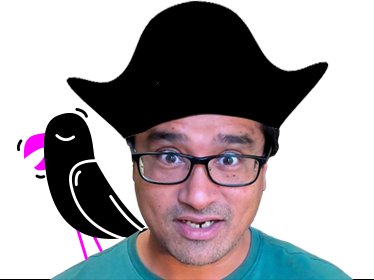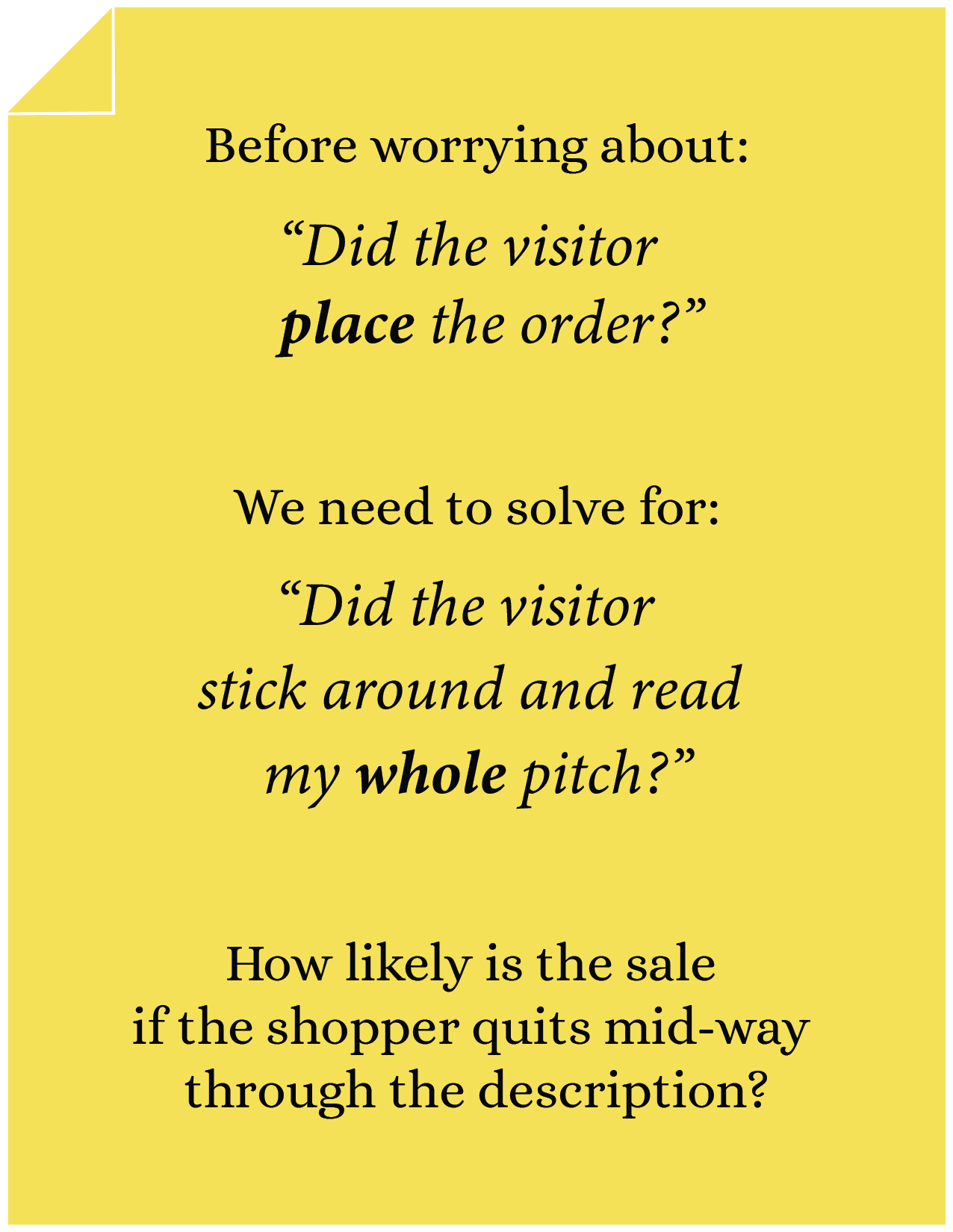Blog
Building An Effective A/B Testing Strategy
The A/B testing strategy we use at Frictionless Commerce is fundamentally different from any other conversion optimization agency.
When most marketers are given 20 hours to improve conversion rates they test ideas like those mentioned in this article.
I’m fairly confident those aren’t the ideas you are interested in either because why else would be here? You’ll like this next section.
Our A/B Testing Strategy
Given 20 hours we’d spend the first 5 hours making a whole bunch of strategic micro-improvements along the length of the page.
Next, we’d invest 6 hours developing a decently good long-form sales pitch. While our decently good first draft A/B test is running we’ll use the remaining 9 hours to fine-tune 2 key variables:
- Content discovery rate
- LFSP consumption rate
The idea is to continue tweaking these 2 variables until a statistical winner is found.

Since you're liking this A/B testing strategy article you're gonna love the conversion ideas I share in my weekly newsletter. Signup below. If it isn't as good as I'm making it sound unsubscribe with one click.
The 2 Key A/B Testing Variables
1: Content Discovery Rate
We have an article dedicated to the subject of content discovery. It will teach everything you need to ensure your most valuable assets are seen by the most site visitors. That article lives here: Content Discovery— Our Shoppers Seeing Our Most Valuable Assets.
2: LFSP Consumption Rate
The content discovery step (above) ensured site visitors didn’t miss key assets. But the LFSP is long so discovering it isn’t enough– we need to also measure the consumption rate on the LFSP. Because if people are exiting after reading just part of the LFSP we need to know that.

To do this we add markers along the length of the LFSP. Those markers reveal how far down the reader went. We use javascript for these markers. Javascript code is added after each key section of the LFSP content. If you want me to add a video to show HOW we insert javascript code just drop a comment in the comments section below.
Say LFSP is discovered by 10% of page visitors but only 2% read to the bottom. That’s a clear signal the LFSP content needs attention. Here are a few things we could do:
Troubleshooting Step 1: Work on the opening of the LFSP. Article: The Art of The Start.
Troubleshooting Step 2: If step 1 didn’t work chop copy length by 50% and focus on your main selling angle.
Troubleshooting Step 3: If the two steps above didn’t work you may need to test radically different ideas.
The A/B testing strategy described above is better than spending all of your time on “perfecting” your initial pitch. Chances are very high that your pitch won’t be as effective the first time as you had hoped. Don’t bother perfecting it right away. Instead, test a rougher version of it, see which copy angles are resonating with your shoppers and which aren’t, then make adjustments and perfect your pitch while validating those changes through A/B tests.
Recap
So we’ve reached the end of our story. We started by talking about conversion rate optimization, then dove into the incredibly beautiful topic of buyer psychology, then went into conversion copywriting, and then got into product page optimization.
For the sake of readability, we have simplified a few details. But these ideas absolutely work as you can see in our 18 case studies.
You absolutely could follow this process yourself. But if you don’t have the time and if your Shopify site is doing over $4 million in annual sales (or your bestseller is doing over $1 million) then you may want to consider talking to us. The benefit of working with us is that we’ve done this process so many damn times we can do it in our sleep. Happy to jump on a call.



